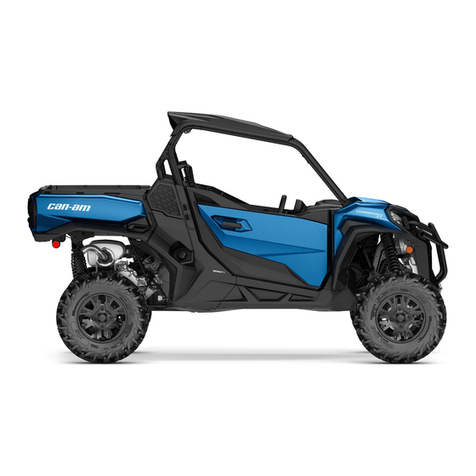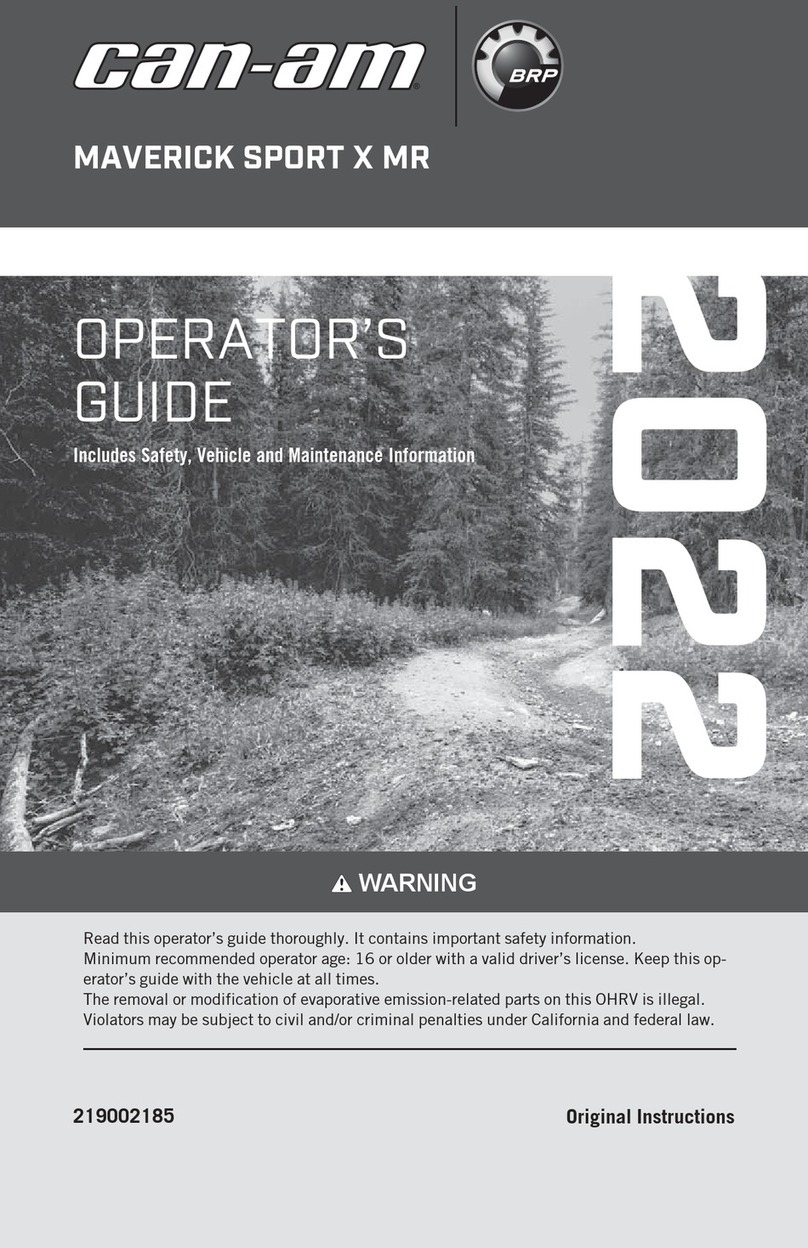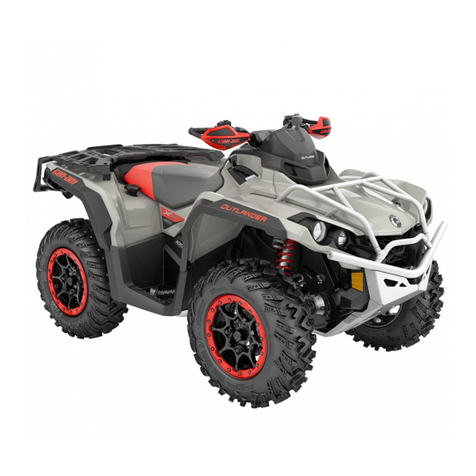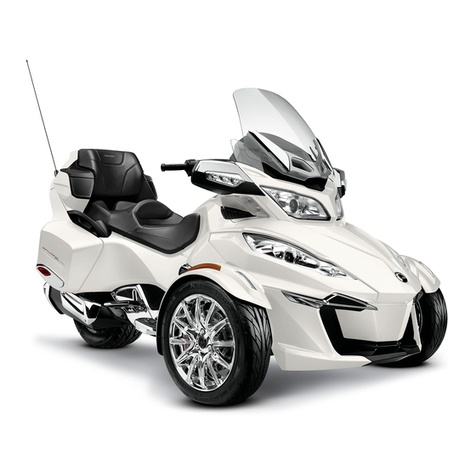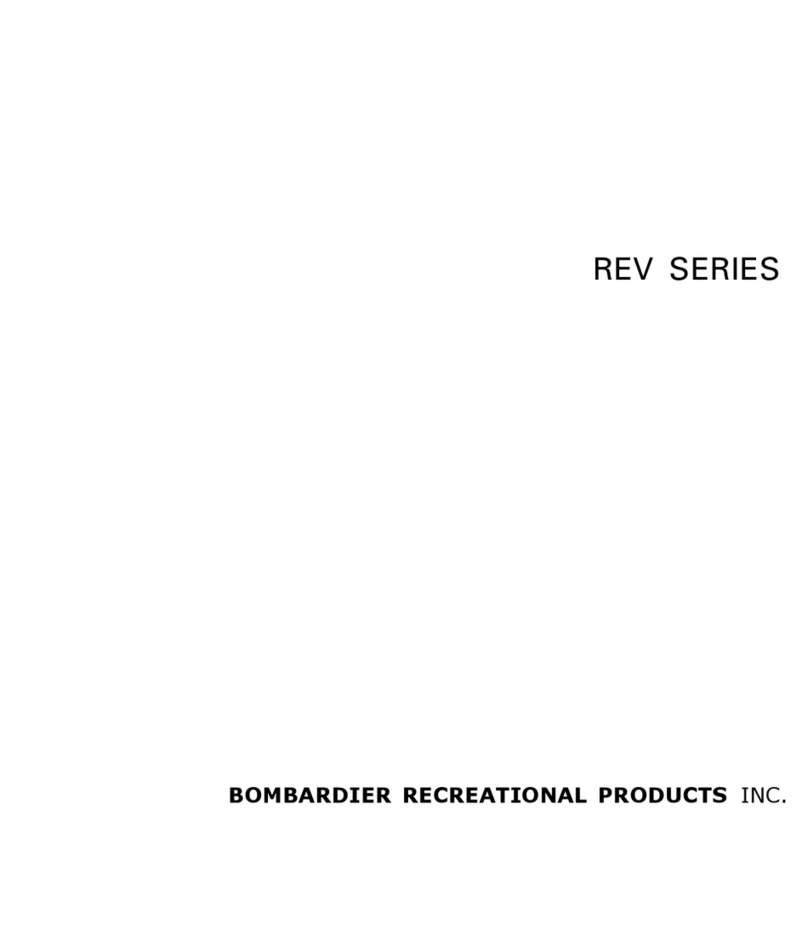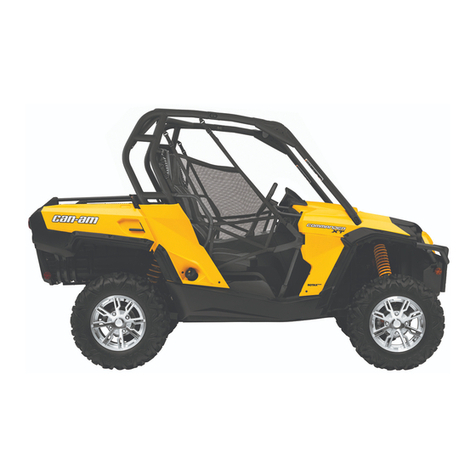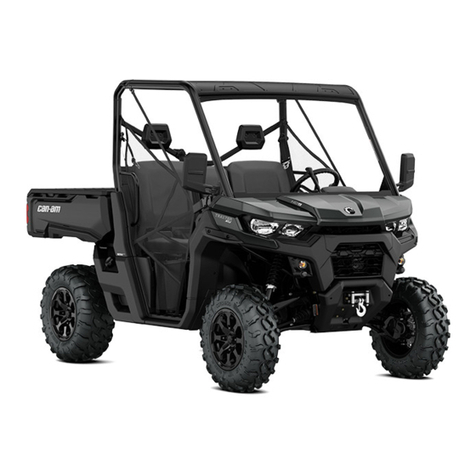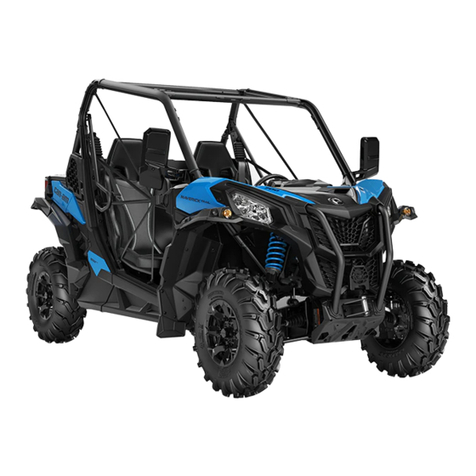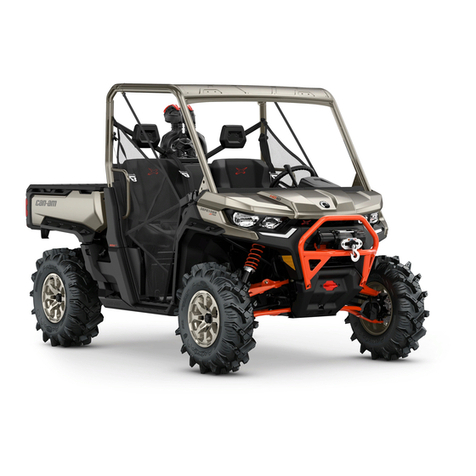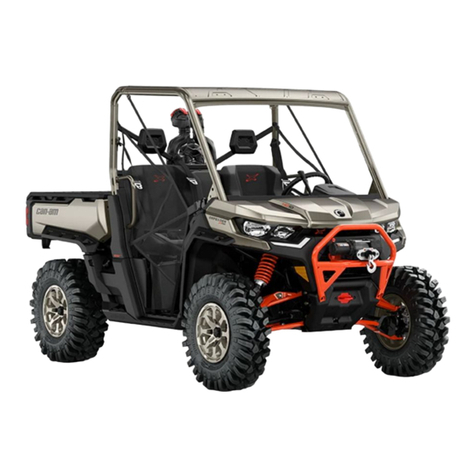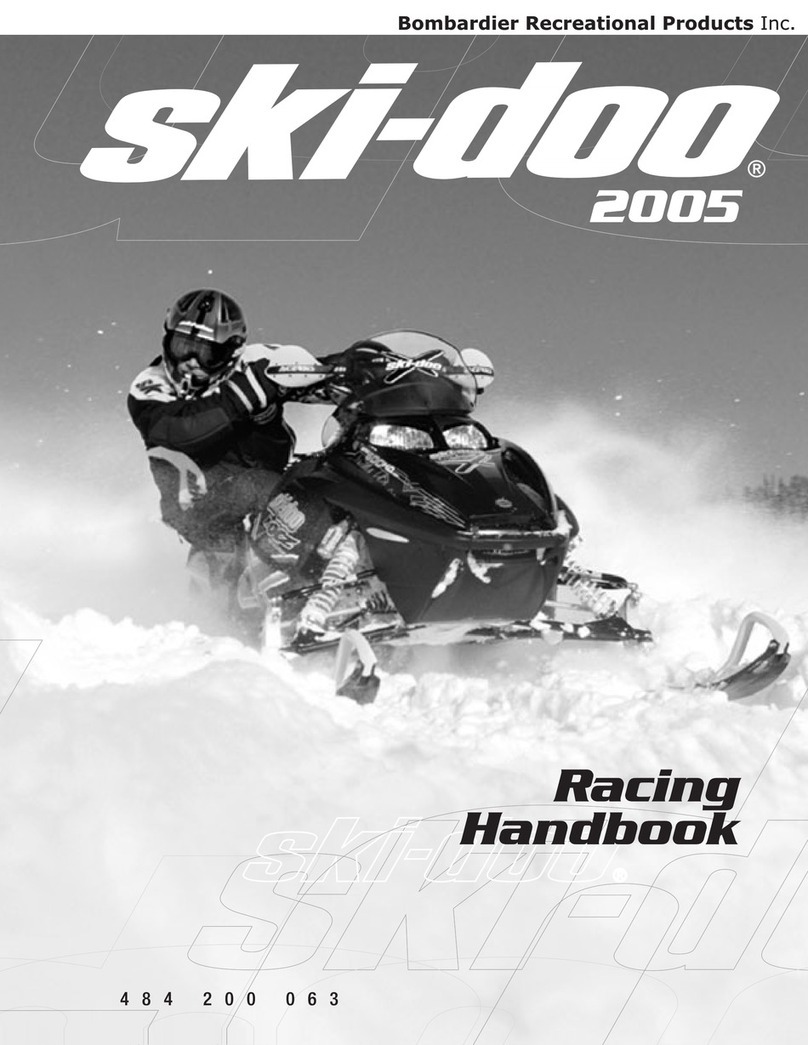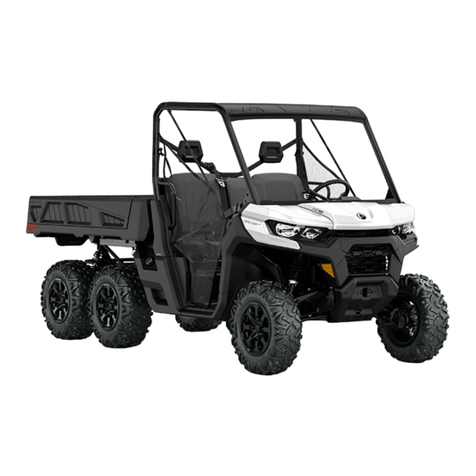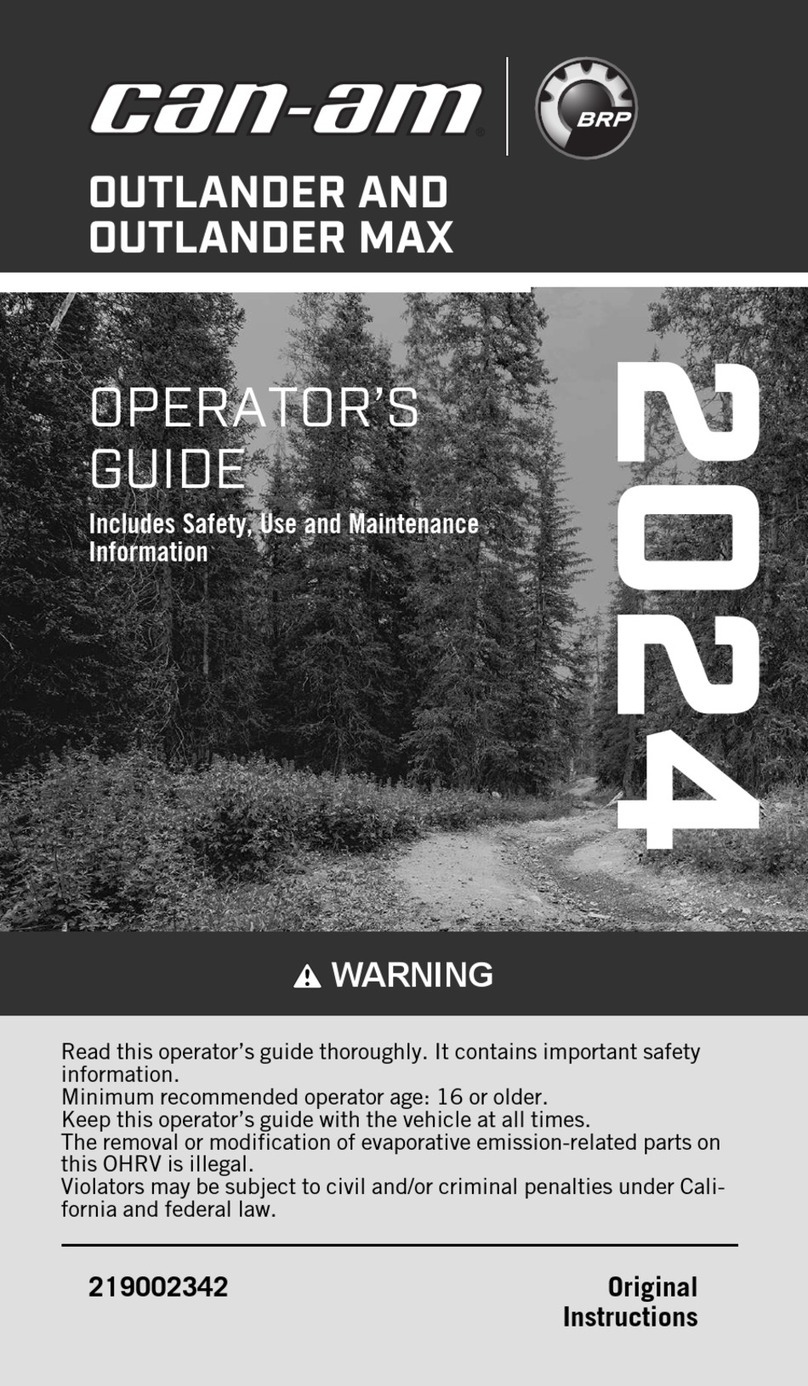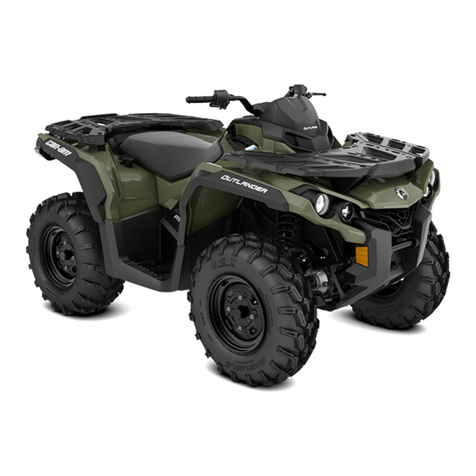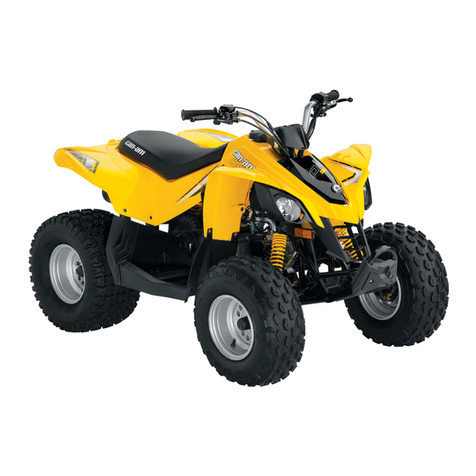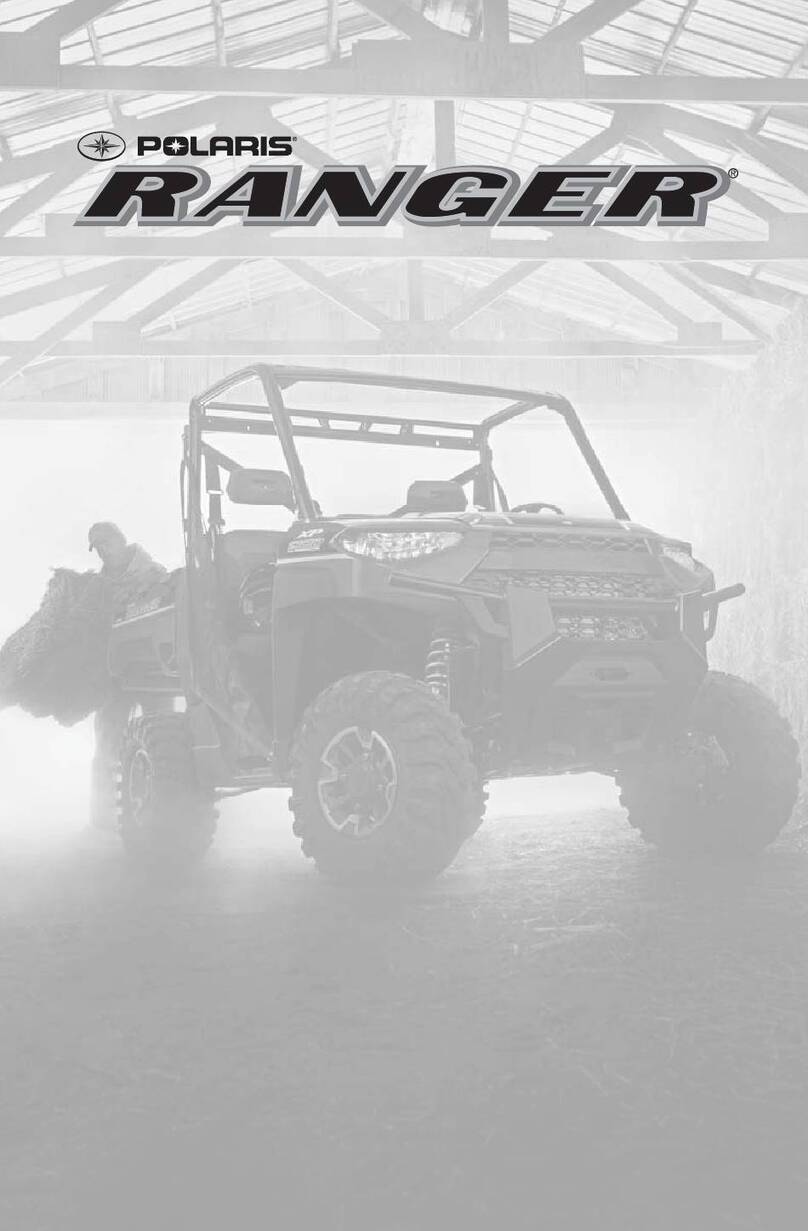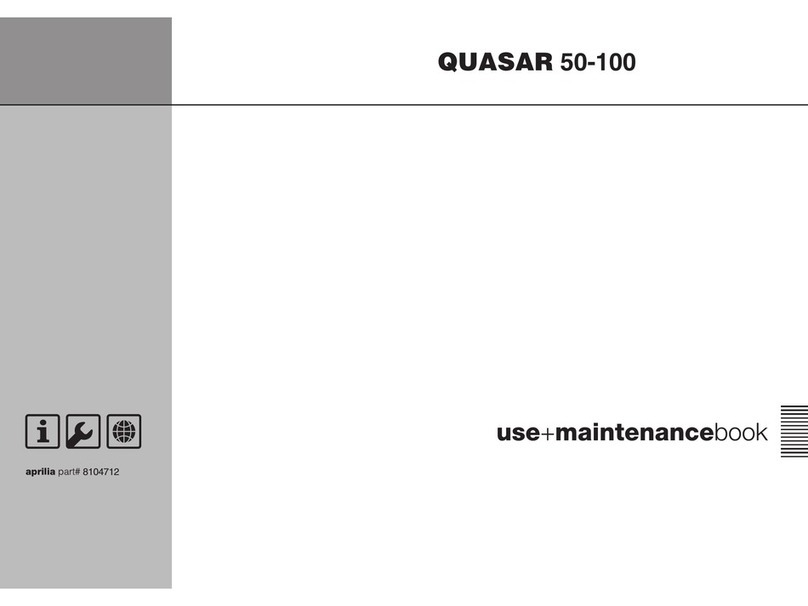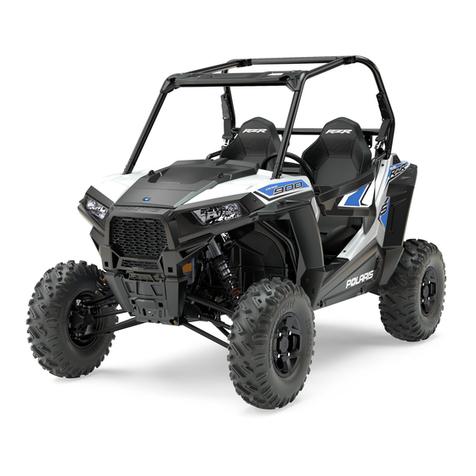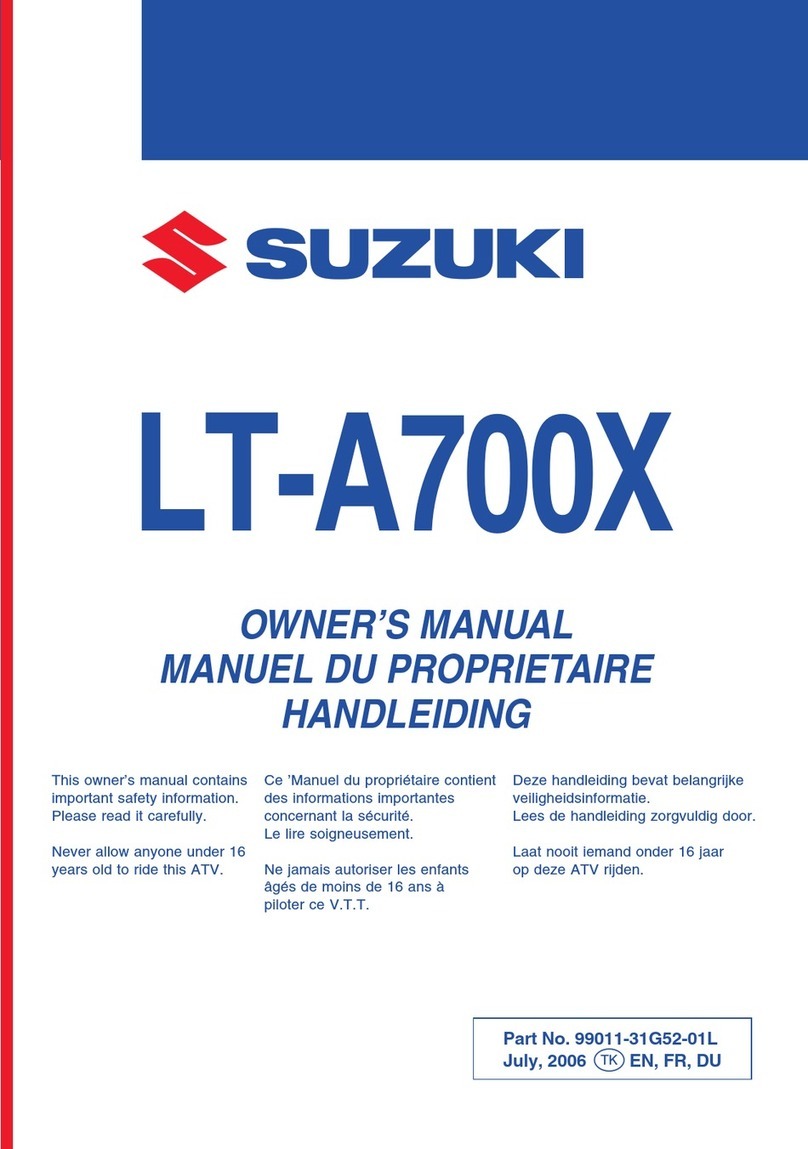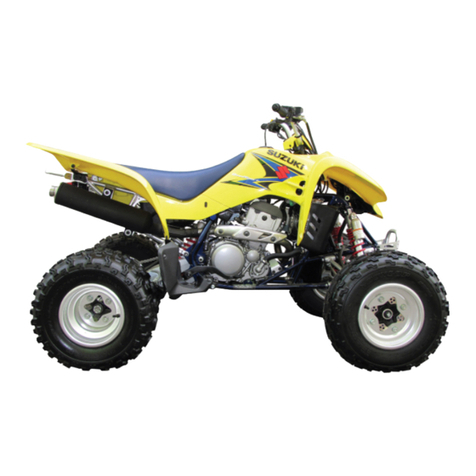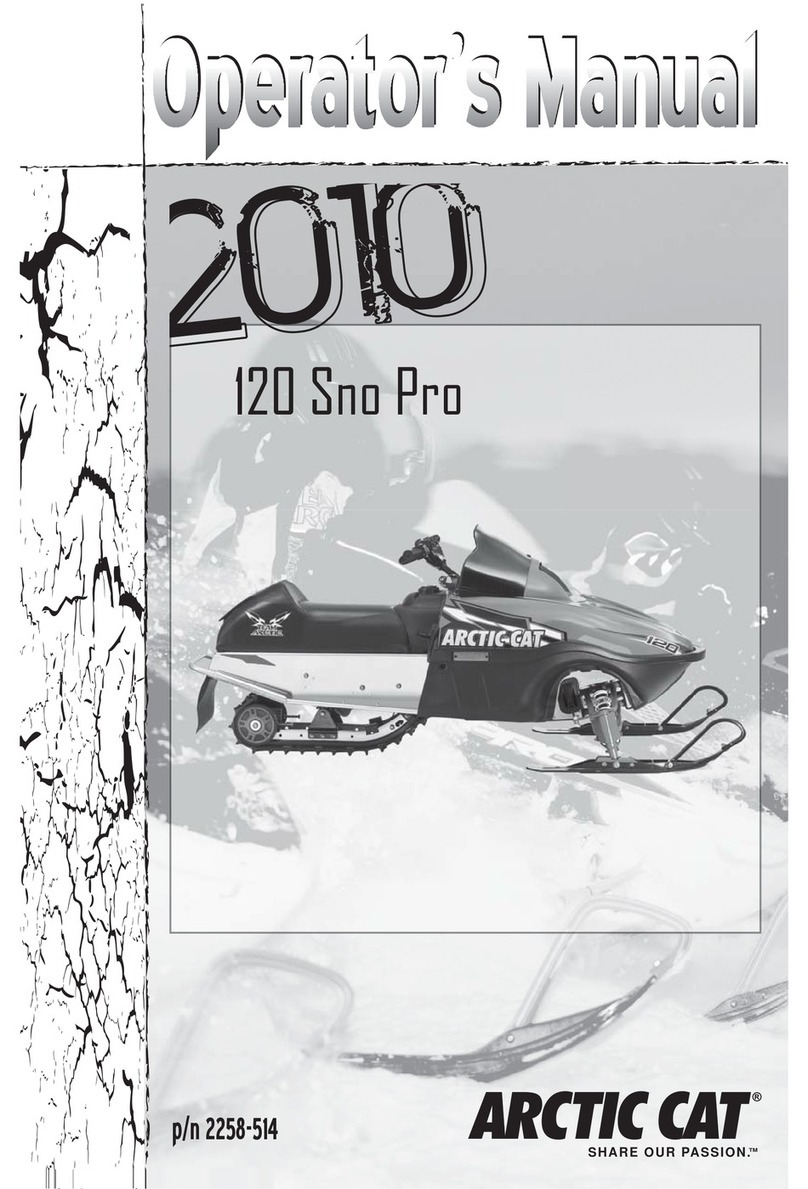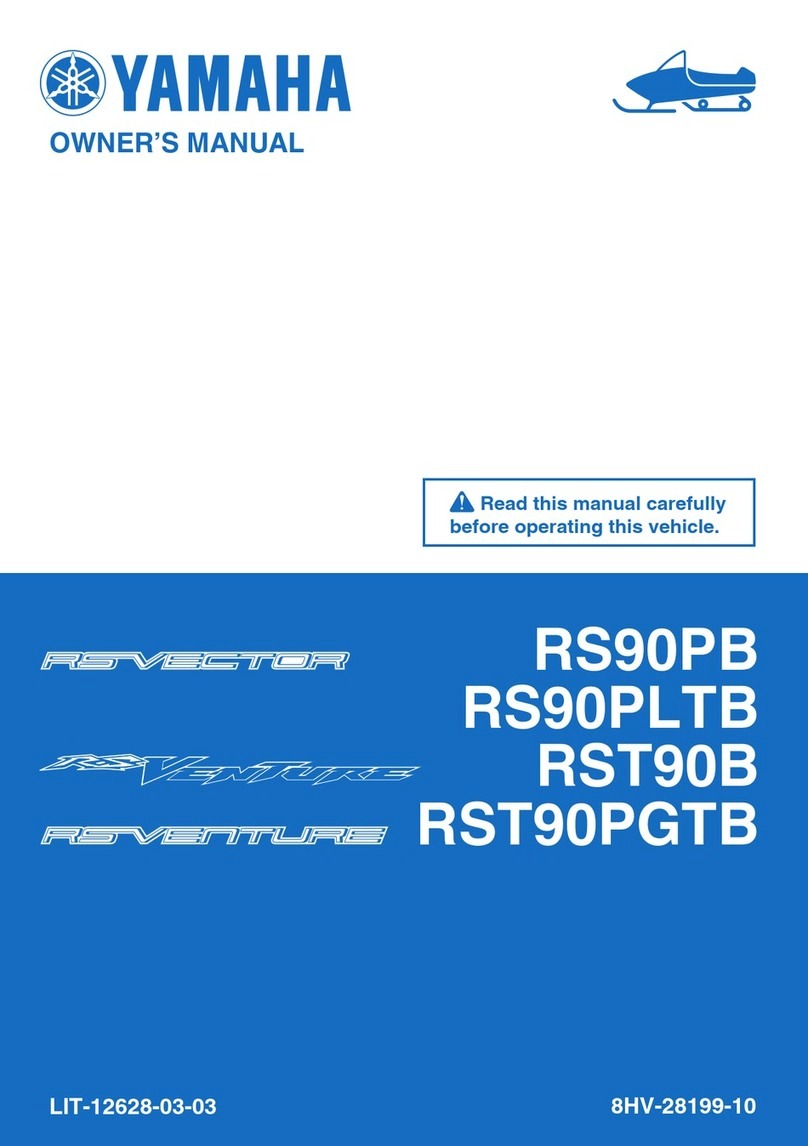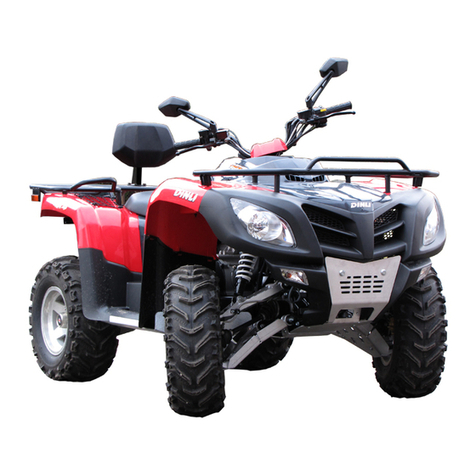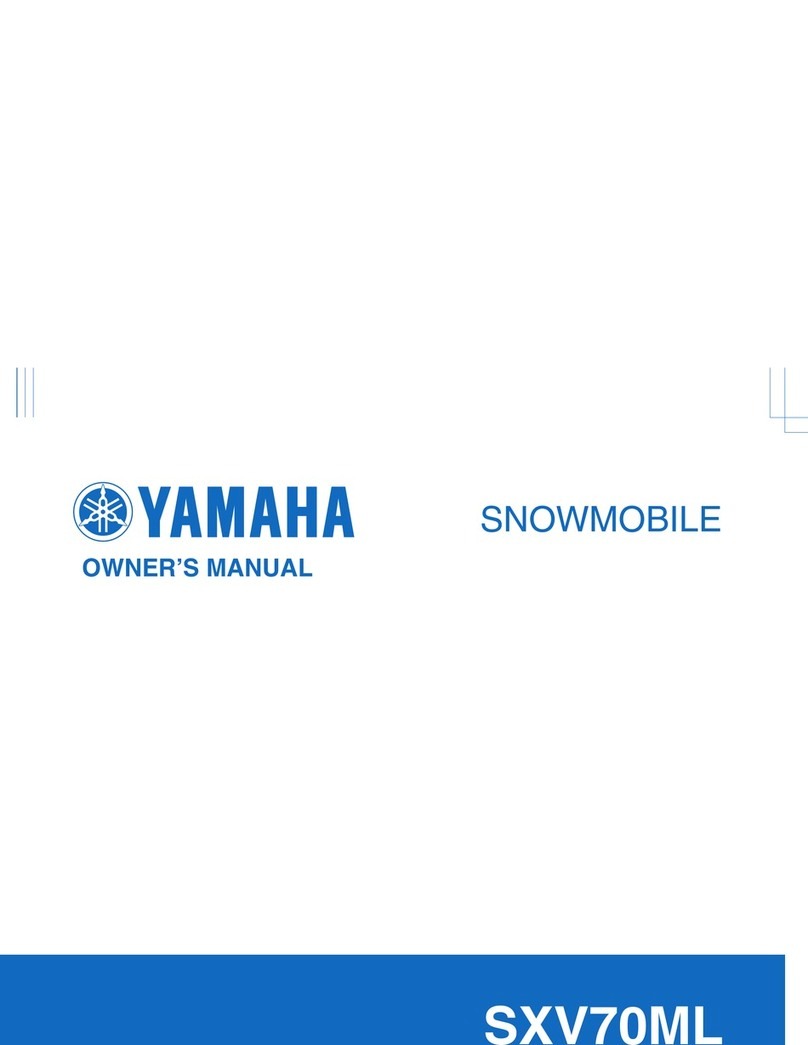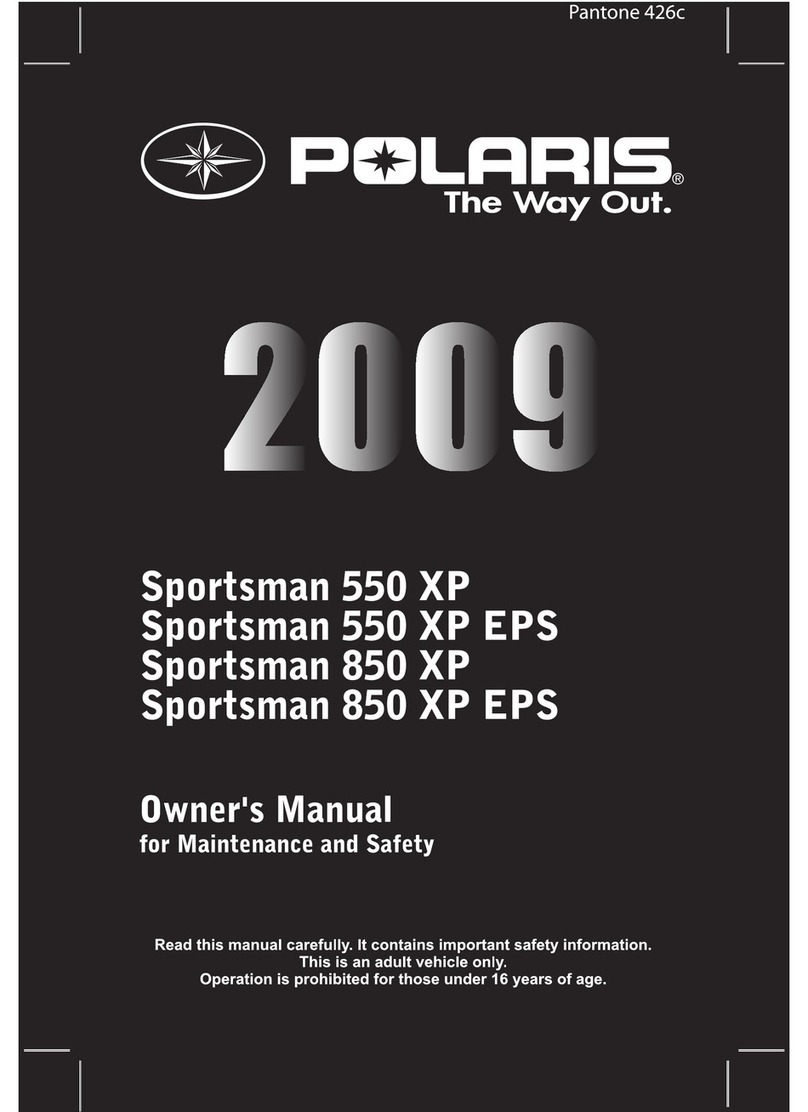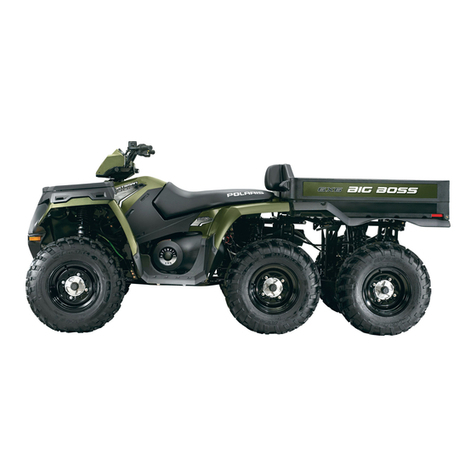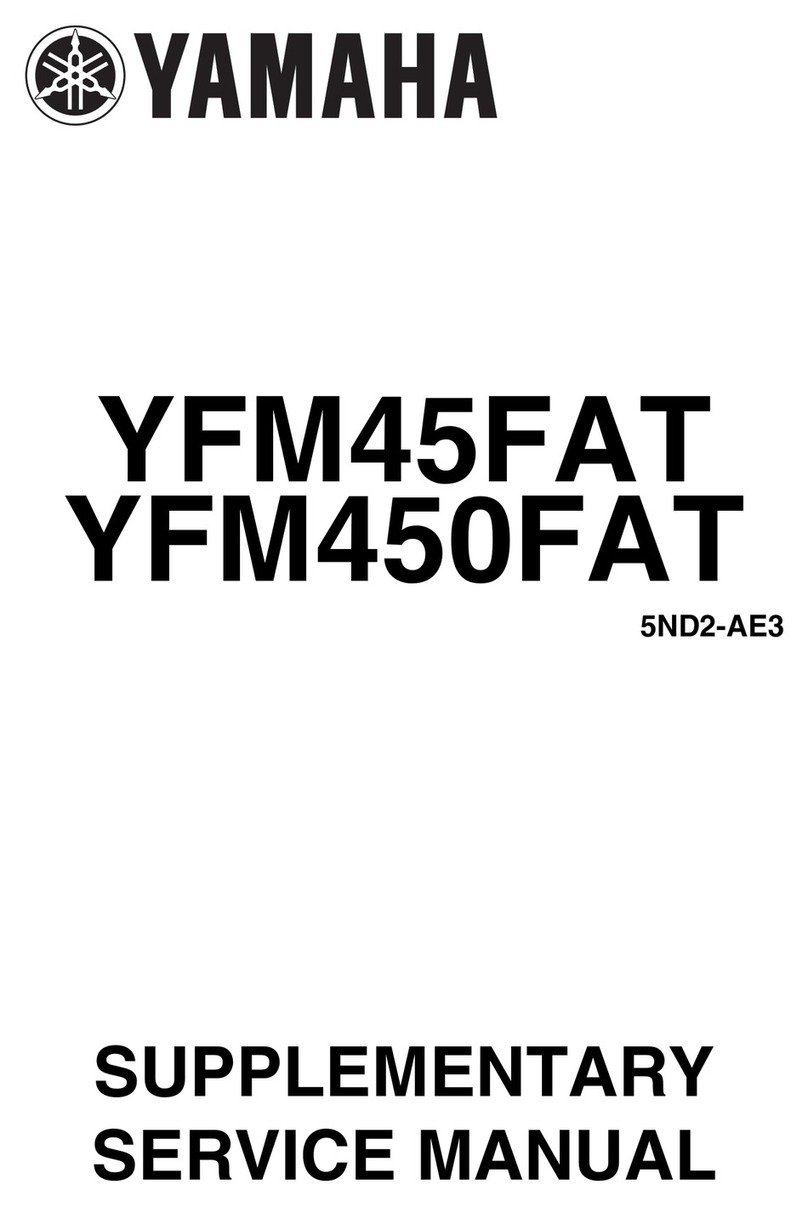
INTRODUCTION
Vehicle Serial Number
The Vehicle Identification Number (V.I.N.) is
scribed on vehicle description decal. See above.
It is also engraved on frame near vehicle descrip-
tion decal.
vmr2007-011-001_c
1. Vehicle serial number
Engine Serial Number
vmo2008-019-010_a
1. Engine serial number
ENGINE EMISSIONS
INFORMATION
Manufacturer's Responsibility
Manufacturers of engines must determine the ex-
haust emission levels for each engine horsepower
family and certify these engines with the United
States of America
ENVIRONMENTAL PROTEC-
TION AGENCY (EPA)
. An emissions control infor-
mation label, showing emission levels and engine
specifications, must be placed on each vehicle at
the time of manufacture.
Dealer Responsibility
When performing service on ATVs that carry an
emissions control information label, adjustments
must be kept within published factory specifica-
tions.
Replacement or repair of any emission related
component must be executed in a manner that
maintains emission levels within the prescribed
certification standards.
Dealers are not to modify the engine in any man-
ner that would alter the horsepower or allow emis-
sion levels to exceed their predetermined factory
specifications.
Exceptions include manufacturer's prescribed
changes, such as altitude adjustments for exam-
ple.
Owner Responsibility
The owner/operator is required to have engine
maintenance performed to maintain emission
levels within prescribed certification standards.
The owner/operator is not to, and should not al-
low anyone to modify the engine in any manner
that would alter the horsepower or allow emis-
sions levels to exceed their predetermined factory
specifications.
EPA Emission Regulations
Some ATVs manufactured by BRP are certified
to the EPA as conforming to the requirements
of the regulations for the control of air pollution
from new ATV engines. This certification is con-
tingent on certain adjustments being set to factory
standards. For this reason, the factory procedure
for servicing the product must be strictly followed
and, whenever practicable, returned to the origi-
nal intent of the design.
The responsibilities listed above are general and
in no way a complete listing of the rules and regu-
lations pertaining to the EPA requirements on ex-
haust emissions for ATVs products. For more de-
tailed information on this subject, you may contact
the following locations:
FORALLCOURIERSERVICES:
U.S. Environmental Protection Agency
Office of Transportation and Air Quality
1310 L Street NW
Washington D.C. 20005
REGULAR US POSTAL MAIL:
1200 Pennsylvania Ave. NW
Mail Code 6403J
Washington D.C. 20460
INTERNET: http://www.epa.gov/otaq/
E-MAIL: otaqpublicweb@epa.gov
Xvmr2008-113
